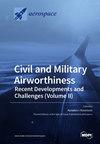太阳加速核大型成像光谱仪(LISSAN):下一代太阳γ射线光谱成像仪器概念
IF 2.2
3区 工程技术
Q2 ENGINEERING, AEROSPACE
引用次数: 0
摘要
太阳爆发事件中的粒子加速模型表明,加速电子和离子的能量可能大致相同。然而,虽然以前的太阳 X 射线光谱成像仪改变了我们对电子加速的理解,但只有一张太阳加速离子发射的 γ 射线分辨图像。本文概述了一种新的卫星仪器概念--太阳加速核大型成像光谱仪(LISSAN)--不仅能够在其生命周期内观测数百个事件,而且能够捕捉每个事件的多幅图像,从而首次对太阳加速离子的动态进行成像。LISSAN 可在 ≲10 秒的时间尺度上对 40 keV-100 MeV 的光子能量进行光谱成像,其灵敏度和成像能力均高于其前身。这是通过部署高分辨率闪烁探测器和间接傅立叶成像技术实现的。LISSAN 适合纳入欧空局 M 级飞行任务等多仪器平台,或作为较小的独立飞行任务。如果没有 LISSAN 能够提供的观测,我们对太阳粒子加速的了解就不可能完整,因此也就不可能了解经常与之相关的空间气象事件。本文章由计算机程序翻译,如有差异,请以英文原文为准。
The Large Imaging Spectrometer for Solar Accelerated Nuclei (LISSAN): A Next-Generation Solar γ-ray Spectroscopic Imaging Instrument Concept
Models of particle acceleration in solar eruptive events suggest that roughly equal energy may go into accelerating electrons and ions. However, while previous solar X-ray spectroscopic imagers have transformed our understanding of electron acceleration, only one resolved image of γ-ray emission from solar accelerated ions has ever been produced. This paper outlines a new satellite instrument concept—the large imaging spectrometer for solar accelerated nuclei (LISSAN)—with the capability not only to observe hundreds of events over its lifetime, but also to capture multiple images per event, thereby imaging the dynamics of solar accelerated ions for the first time. LISSAN provides spectroscopic imaging at photon energies of 40 keV–100 MeV on timescales of ≲10 s with greater sensitivity and imaging capability than its predecessors. This is achieved by deploying high-resolution scintillator detectors and indirect Fourier imaging techniques. LISSAN is suitable for inclusion in a multi-instrument platform such as an ESA M-class mission or as a smaller standalone mission. Without the observations that LISSAN can provide, our understanding of solar particle acceleration, and hence the space weather events with which it is often associated, cannot be complete.
求助全文
通过发布文献求助,成功后即可免费获取论文全文。
去求助
来源期刊

Aerospace
ENGINEERING, AEROSPACE-
CiteScore
3.40
自引率
23.10%
发文量
661
审稿时长
6 weeks
期刊介绍:
Aerospace is a multidisciplinary science inviting submissions on, but not limited to, the following subject areas: aerodynamics computational fluid dynamics fluid-structure interaction flight mechanics plasmas research instrumentation test facilities environment material science structural analysis thermophysics and heat transfer thermal-structure interaction aeroacoustics optics electromagnetism and radar propulsion power generation and conversion fuels and propellants combustion multidisciplinary design optimization software engineering data analysis signal and image processing artificial intelligence aerospace vehicles'' operation, control and maintenance risk and reliability human factors human-automation interaction airline operations and management air traffic management airport design meteorology space exploration multi-physics interaction.
 求助内容:
求助内容: 应助结果提醒方式:
应助结果提醒方式:


